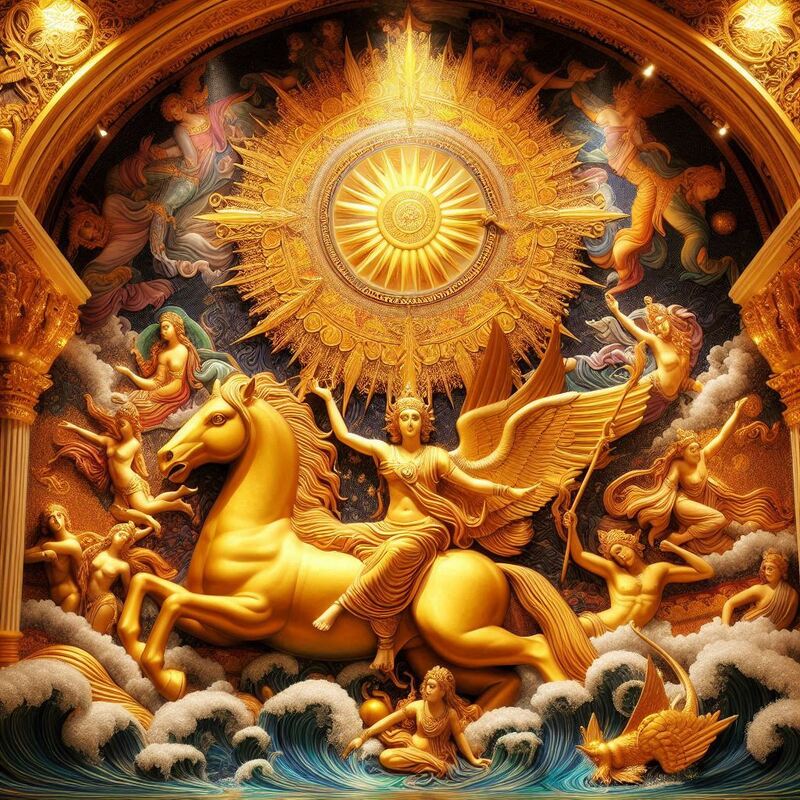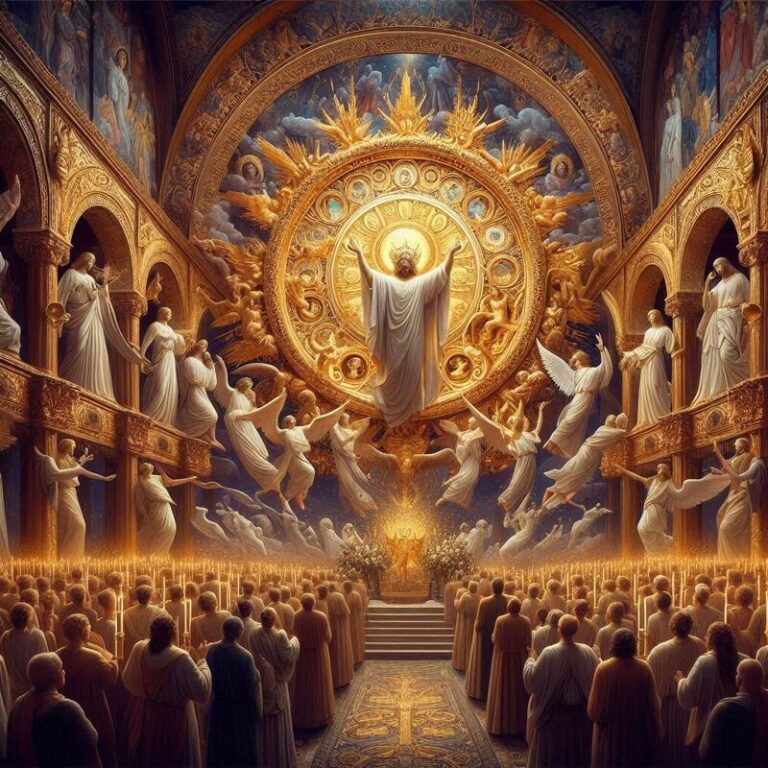Golden Ages

Golden Ages
Golden Ages: The Mythical Eras of Peace and Prosperity
Throughout human history, the concept of a Golden Age has persisted across various cultures and civilizations. These mythical eras are often depicted as periods of unparalleled peace, prosperity, and harmony, when humanity lived in a state of perfect bliss, untainted by the struggles and hardships of later times. The idea of a Golden Age serves as a powerful symbol of an ideal past, offering a vision of what life could be like in a utopian society. This article explores the concept of the Golden Age in different mythologies, examining how these eras reflect the hopes, values, and dreams of ancient peoples.
The Greek Golden Age
In Greek mythology, the Golden Age is described by the poet Hesiod in his work “Works and Days.” Hesiod divides the history of mankind into five distinct ages, with the Golden Age being the first and most idyllic. During this time, the earth provided abundantly for all, and humans lived in harmony with the gods. There was no need for labor, as the land yielded its fruits spontaneously. People were free from sorrow and strife, living long, peaceful lives before passing away in a gentle sleep, eventually becoming benevolent spirits who watched over the living.

The Greek Golden Age reflects a yearning for a simpler, more harmonious existence. It symbolizes a time when humanity was close to the divine, living in a state of grace and abundance. This age serves as a benchmark against which all subsequent ages are measured, highlighting the perceived decline in human virtue and the increasing hardships of life.
The Hindu Satya Yuga
Golden Ages
In Hindu cosmology, the concept of cyclical time is central, with the history of the world divided into four Yugas or ages. The first and most perfect of these is the Satya Yuga, also known as the Krita Yuga. During this age, dharma (righteousness) is at its peak, and virtue is universal. Truth and justice prevail, and humans possess immense wisdom and physical prowess. The average human lifespan is said to be much longer, with people living for thousands of years.

The Satya Yuga is characterized by an absence of suffering and a close relationship between humans and the divine. Spirituality and morality are the cornerstones of society, and there is no need for laws or punishment, as everyone naturally adheres to dharma. The abundance of the earth ensures that all needs are met without conflict.
This age reflects the Hindu ideal of a society in perfect harmony with cosmic order. It serves as a model for spiritual aspiration, emphasizing the importance of virtue and the potential for human beings to live in a state of enlightenment and bliss.
The Norse Golden Age
Golden Ages
In Norse mythology, the concept of a Golden Age is depicted in the age of the gods before the creation of the world as known to humanity. This era is described in the “Poetic Edda” and the “Prose Edda,” where the gods lived in a state of peace and cooperation. The world was abundant, and there was no need for struggle or conflict. This period came to an end with the arrival of the giantess Gullveig, whose presence brought greed and discord among the gods, leading to the eventual creation of the human world and its inherent struggles.

The Norse Golden Age underscores the idea of an initial state of harmony disrupted by external forces, leading to the complexities and challenges of mortal existence. It reflects the Norse belief in cyclical time and the inevitable decline from an ideal state, with the hope of eventual renewal after the apocalyptic events of Ragnarok.
The Chinese Age of Perfect Virtue
Golden Ages
In Chinese mythology and philosophy, the concept of a Golden Age is often associated with the reigns of legendary sage-kings such as Yao, Shun, and Yu the Great. These rulers are said to have governed with perfect virtue, wisdom, and benevolence, bringing peace and prosperity to their people. The era of these sage-kings is described as a time when humanity lived in harmony with nature and the cosmos, with a well-ordered society free from corruption and conflict.

Confucianism, in particular, extols this period as an ideal to strive for, emphasizing the importance of moral leadership and the cultivation of virtue. The Age of Perfect Virtue serves as a reminder of the potential for wise and just governance, inspiring leaders to emulate the example of the sage-kings.
The Mesopotamian Golden Age
Golden Ages
In Mesopotamian mythology, the concept of a Golden Age appears in the story of the Garden of Eden, shared by the Sumerian, Akkadian, and later Judeo-Christian traditions. This paradise, located at the beginning of human history, is depicted as a lush and fertile garden where humans lived in close communion with the gods, free from toil and suffering. The Garden of Eden represents an ideal state of existence, lost through human disobedience and the subsequent expulsion from paradise.

The Mesopotamian Golden Age highlights the theme of an initial state of innocence and perfection, lost through human actions. It reflects the longing for a return to a simpler, more harmonious way of life and serves as a powerful metaphor for the consequences of human choices.
The Legacy of the Golden Ages
Golden Ages
The concept of a Golden Age continues to resonate in modern times, reflecting enduring human desires for peace, prosperity, and harmony. These mythical eras offer a vision of what life could be like in an ideal society, free from the challenges and conflicts that characterize the present. They serve as a source of inspiration and hope, encouraging individuals and societies to strive for a better future.

In literature, art, and popular culture, the Golden Age motif appears repeatedly, symbolizing the possibility of a utopian existence. Whether through the idyllic landscapes of fantasy novels, the harmonious societies depicted in science fiction, or the nostalgic portrayals of simpler times in historical fiction, the idea of a Golden Age remains a powerful and evocative theme.
Conclusion
Golden Ages represent more than just mythical eras of peace and prosperity; they embody the aspirations and values of the cultures that conceived them. These periods of perfect harmony serve as benchmarks against which human progress and morality are measured, offering a vision of what could be achieved through virtue, wisdom, and a close relationship with the divine. As enduring symbols of an ideal past, they continue to inspire and guide humanity in its quest for a better world.


